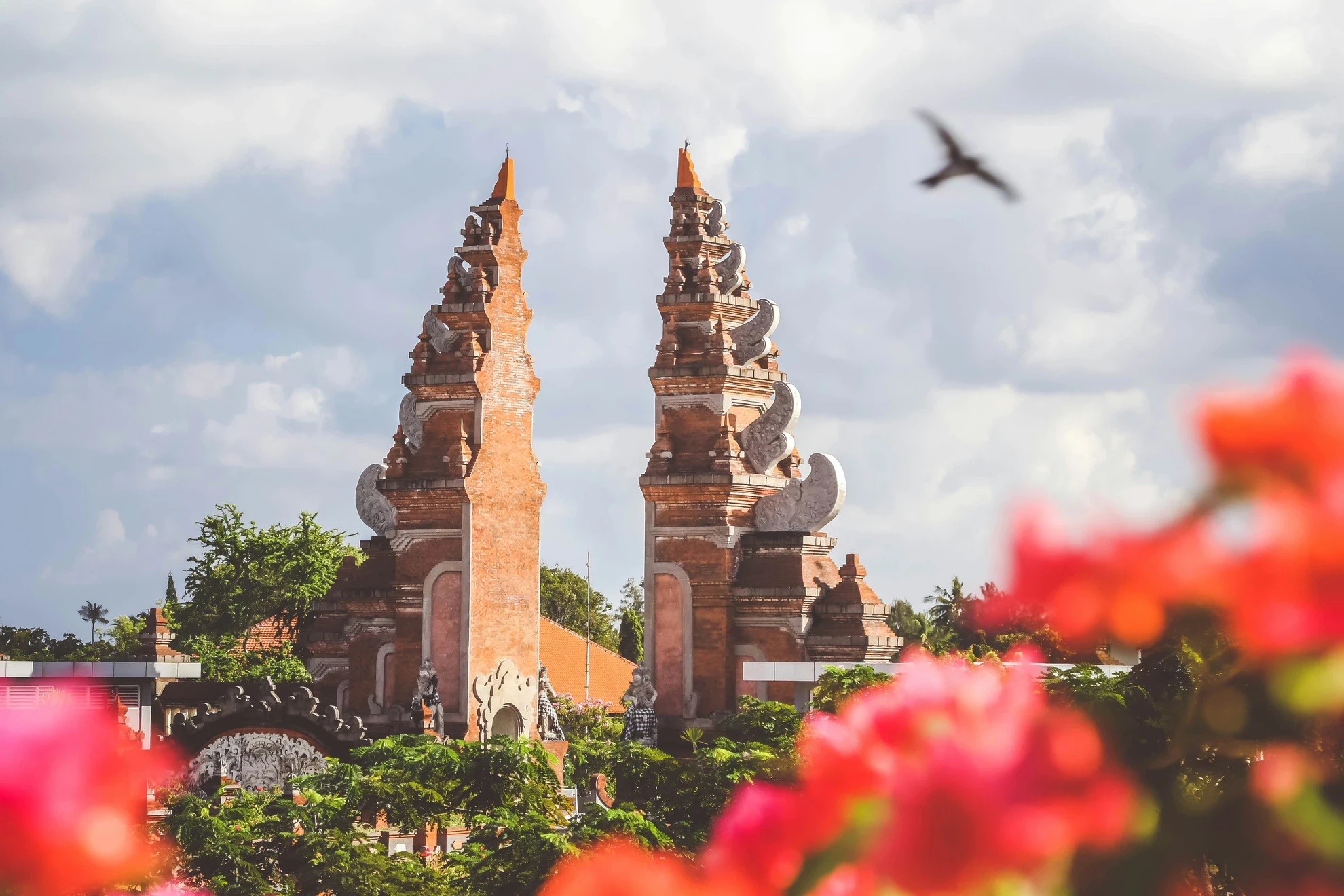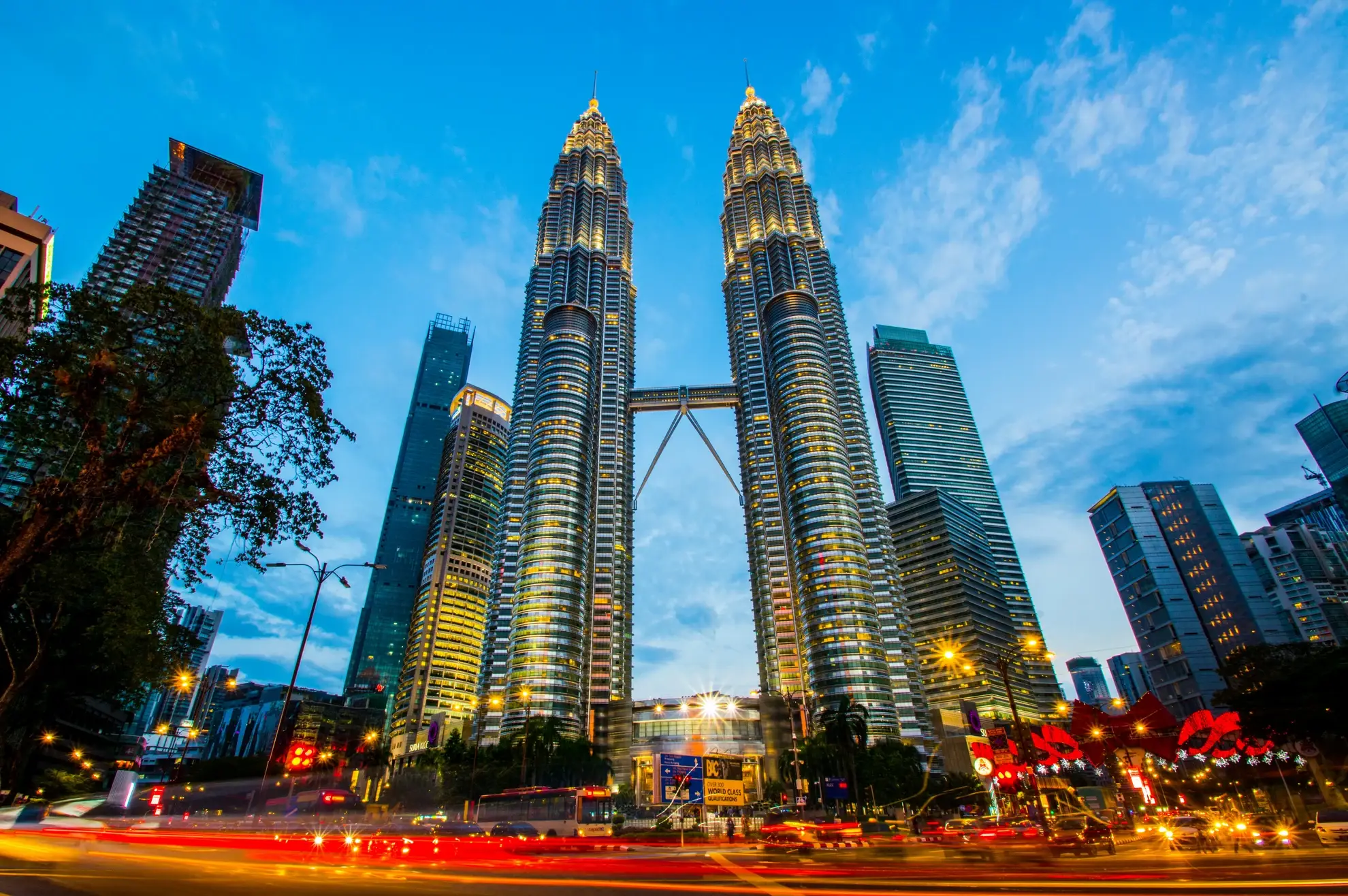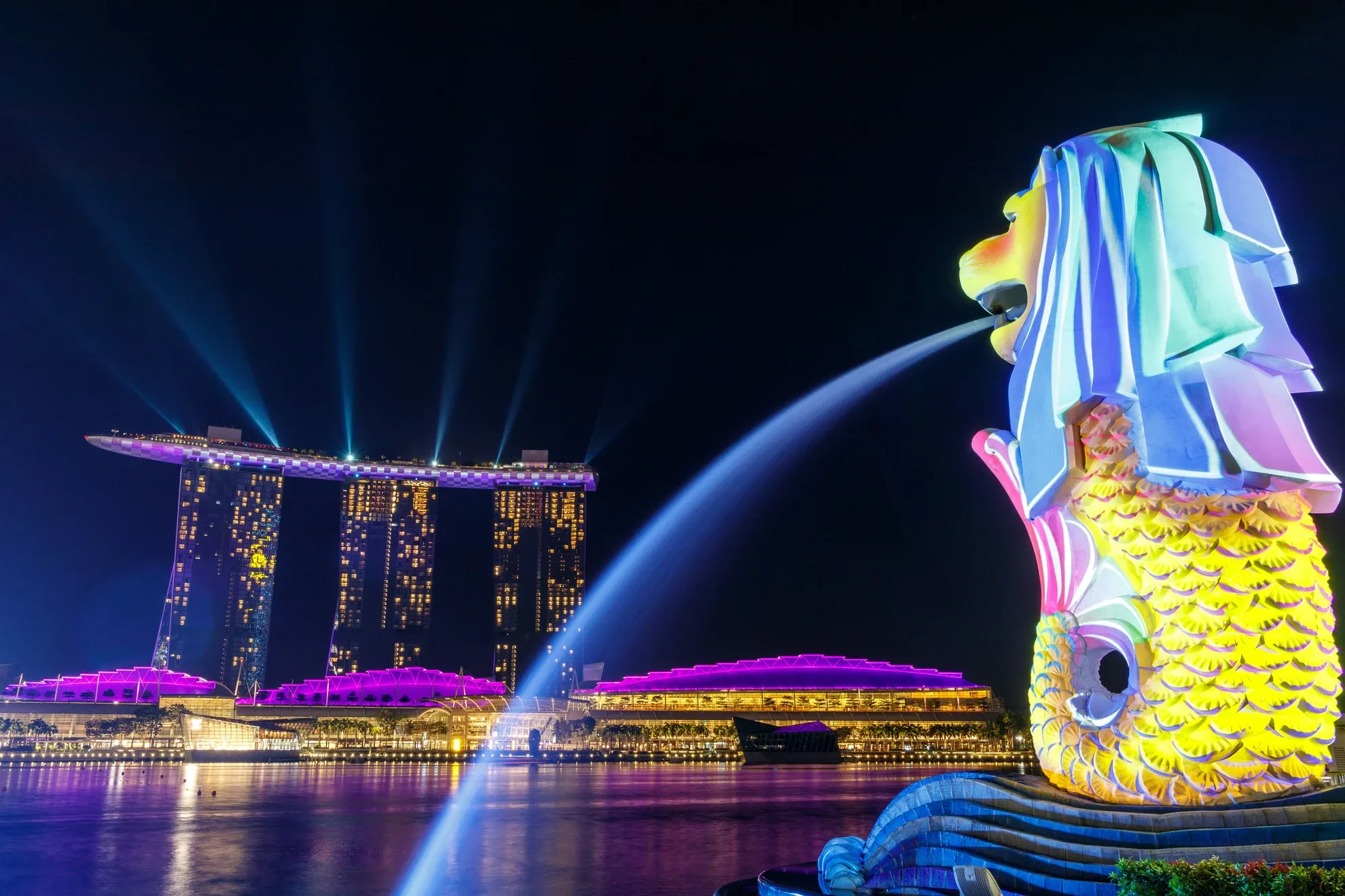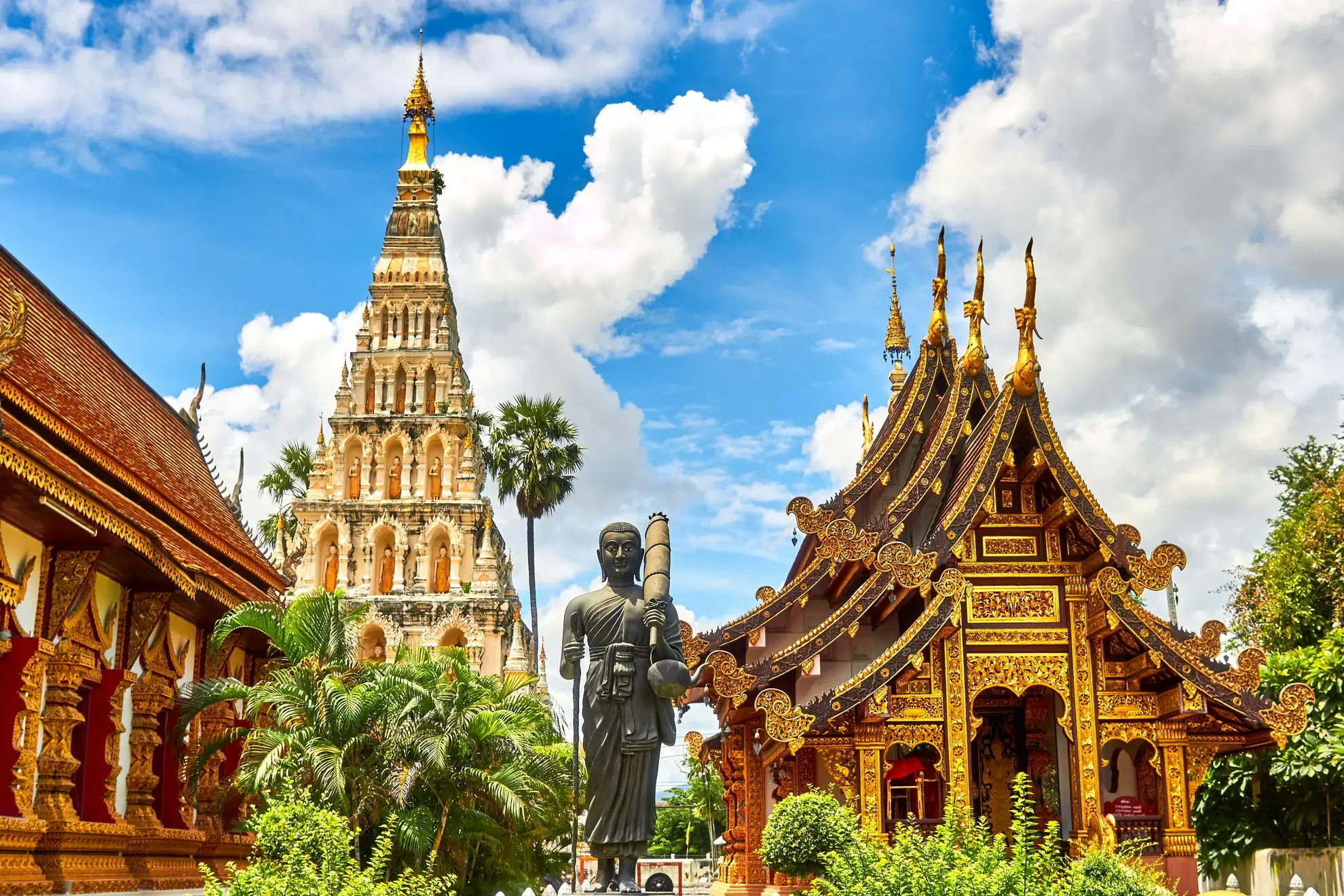eSIM Plans for Travelers to The Southeast Asia 4 Countries
Unlimited data at kbps after using
Get Connected Instantly Worldwide
Follow our proven 3-step process to enjoy seamless internet connectivity during your travels. Trusted by over 1 million travelers globally.
Ready to Stay Connected Anywhere?
Join millions of satisfied travelers who choose our reliable eSIM solutions for their international connectivity needs.
What You Need to Know About Southeast Asia 4 Countries Network
Network Coverage
urban area
• Major cities have good 4G network coverage, with Singapore and some areas in Thailand offering 5G services.
- Singapore: Achieves 95% nationwide 5G coverage, with internet speeds reaching 300Mbps in subway stations and commercial districts, alongside comprehensive Wi-Fi coverage in public areas, ranking as one of the countries with the most advanced 5G infrastructure globally.
- Kuala Lumpur (Malaysia): 5G pilot coverage in the city center, stable 4G speeds around the Petronas Twin Towers at 60Mbps, reliable signals at major transport hubs, with 4G coverage exceeding 90%.
- Jakarta (Indonesia): Full 4G coverage in the central business district with an average speed of 40Mbps, signal fluctuations in satellite cities, and 15% 5G coverage.
- Bangkok (Thailand): 5G coverage from Suvarnabhumi Airport to the city center, with 4G speeds reaching 50Mbps in commercial areas, and 3G and 4G service coverage rates at 99.5% and 100% respectively.
- Penang (Malaysia): George Town Heritage Zone maintains stable 4G, with continuous signal coverage along the Penang Bridge and over 85% 4G coverage in suburban areas.
- Bali (Indonesia): Tourist areas like Kuta and Ubud have good 4G coverage, with a 5G pilot in the Nusa Dua resort area. Urban network speeds can reach up to 45Mbps.
- Chiang Mai (Thailand): The ancient city and airport have full 4G coverage, the Nimmanhaemin Road business district offers commercial 5G, while internet speeds in suburban areas drop to 15-20Mbps.
- Singapore's Marina Bay: A 5G fully covered area with an average download speed of 220Mbps, ranking among the highest in Southeast Asia.
Tourist attractions and suburbs
• Basic coverage for popular attractions, with unstable signals in outlying islands and rainforest areas.
- Ubud Palace (Bali, Indonesia): 4G coverage is available in the main square, but the signal weakens in the surrounding rice field areas. It is recommended to use a local SIM card.
- Grand Palace (Bangkok, Thailand): Unstable signal inside the building complex, good 4G coverage in courtyard areas, religious architectural structures affect signal transmission.
- Semporna (Sabah, Malaysia): The resort has 4G coverage, but the signal is weak in the water villa area, and there is no underwater network at the dive sites.
- Borobudur (Java, Indonesia): Stable 4G around the temple complex, intermittent signal at the summit viewing platform, and limited coverage in rainforest areas.
- Koh Samui (Thailand): Chaweng Beach has continuous 4G coverage, Ang Thong National Park's main island has 3G, while the outlying islands experience weak signals.
- Genting Highlands (Malaysia): The casino resort has full 4G coverage, while the mountain road has intermittent signals and no coverage inside tunnels.
- Komodo Island (Indonesia): The visitor center has 4G coverage, the Dragon Bay area has weak signals, and remote islands rely on satellite communication.
- Kwai River Bridge (Thailand): The main bridge area has good 4G coverage, but the signal disappears in the deep canyon, and only 2G is available in the forest hiking zone.
- Cameron Highlands (Malaysia): The tea plantation scenic area has stable 4G connectivity, but signal weakens at night. It is recommended to use high-data applications during the day.
- Redang Island (Malaysia): 4G coverage available in the pier area, limited signal at island resorts, and unstable network during the rainy season.
Network Usage Tips
Rainforest and Outlying Island Regions
In the rainforests of Kalimantan, Indonesia, and the remote islands of the Andaman Sea in Thailand, signal strength is weak. It is recommended to download offline maps in advance. While 3G/4G networks cover over 90% of the population in Southeast Asia, coverage is limited in remote islands and rainforest areas.
Religious venue restrictions
Inside Thai temples and Indonesian mosques, signal attenuation often occurs due to architectural structures. It is recommended to use the internet in open courtyards and avoid using mobile phones during religious ceremonies.
Festivals and Travel Peaks
During the Songkran Festival (Thailand) and Hari Raya (Malaysia), network congestion is expected, so it is recommended to stagger video calls during peak hours. With over 400 million mobile users in Southeast Asia, base station loads significantly increase during holidays.
Inter-island network switching
Signal interruptions may occur in cross-sea areas such as from Bali to Lombok. It is recommended to activate an international roaming backup plan to ensure communication continuity.
Impact of heavy rain weather
During the rainy season (May to October), thunderstorms may cause temporary disruptions to base stations, so it is recommended to download necessary materials at the hotel. Network stability in Southeast Asia is significantly affected by climate conditions.
Language and Customer Support
Local customer service primarily uses the local language, so it is recommended to keep an English version of the user guide. While major cities in Singapore and Thailand offer Chinese-language support, English assistance is limited in some areas of Indonesia and Malaysia.
Battery Consumption Alert
In areas with weak signals, such as islands, mobile phones consume more power when searching for networks, so it is recommended to carry a power bank. The mobile phone penetration rate in Southeast Asia reaches 95%, but network quality varies significantly across different regions.
Border area restrictions
Some areas along the Thailand-Cambodia border and the Indonesia-Malaysia border may experience network latency. It is recommended to manually select a network in advance to avoid additional charges from automatic roaming.
Price Evaluation
Mobile network coverage in four Southeast Asian countries reaches 89% of the population living within 3G/4G coverage, with a relatively small gap between urban and rural areas (95% urban, 65% rural). Mobile data prices in these four countries are more economical compared to Africa, with basic urban plans (500MB-1GB/day) sufficient for daily needs. According to GSMA data, 4G coverage in Southeast Asia has reached 85%, while 5G is being rapidly deployed in major cities like Singapore and Thailand. For urban travel, a 1GB plan is recommended, while island exploration may require 2GB or more to account for signal fluctuations. Mobile internet penetration in Southeast Asia continues to rise, with middle- to high-income countries in the region (particularly Indonesia, Malaysia, and Thailand) serving as the primary growth areas.
Recommended eSIM packages relevant to you
Enjoy seamless connectivity on your travels. Choose from our diverse global eSIM plans to enhance your next journey.



